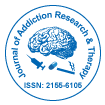开放获取期刊获得更多读者和引用
700 种期刊 和 15,000,000 名读者 每份期刊 获得 25,000 多名读者
索引于
- CAS 来源索引 (CASSI)
- 哥白尼索引
- 谷歌学术
- 夏尔巴·罗密欧
- 打开 J 门
- Genamics 期刊搜索
- 学术钥匙
- 期刊目录
- 安全点亮
- 中国知网(CNKI)
- 电子期刊图书馆
- 参考搜索
- 哈姆达大学
- 亚利桑那州EBSCO
- OCLC-世界猫
- SWB 在线目录
- 虚拟生物学图书馆 (vifabio)
- 普布隆斯
- 日内瓦医学教育与研究基金会
- 欧洲酒吧
- ICMJE
有用的链接
开放获取期刊
分享此页面
抽象的
Socio-Moral Continuity and the Representation of Alcoholism in Four Major American Print Media Sources
Amy Platt
Scholars have long attempted to explain the factors that lead to alcoholism. Indeed, various attempts to characterize alcoholism have been made including the moral model, the temperance model, the disease model, the harm reduction model, the social education model, and the neurobiological model. Since the introduction of the disease model, it has gained wide consensus in the scientific and therapeutic communities, although not in the public at large. In fact, the public seem to be committed primarily to the moral model and to the public health model secondarily, based on the inordinate influence that broadcast and news media have on society. In this study, articles from four major American newspapers are subject to an exploratory content analysis using constructed random samples to explore how these articles portray alcoholism. The presented results show that of a sample of 881 articles, only seven characterize alcoholism as a disease. Given the persistence of the moral model, in the face of the alternative scientific/therapeutic consensus, the theoretical construct of “socio-moral continuity” is introduced.

 English
English  Spanish
Spanish  Russian
Russian  German
German  French
French  Japanese
Japanese  Portuguese
Portuguese  Hindi
Hindi